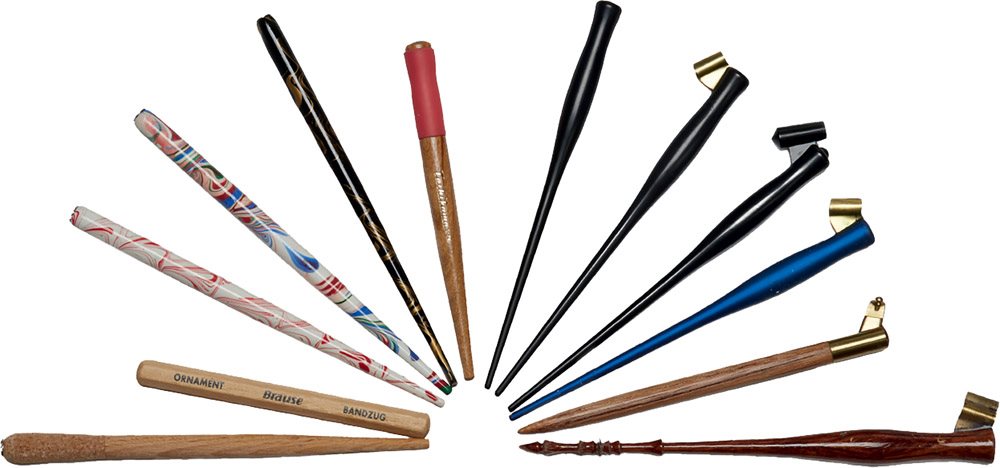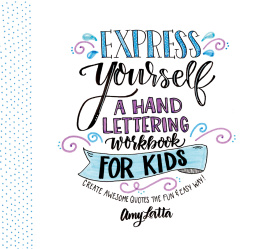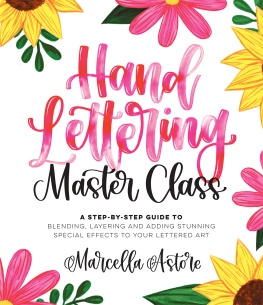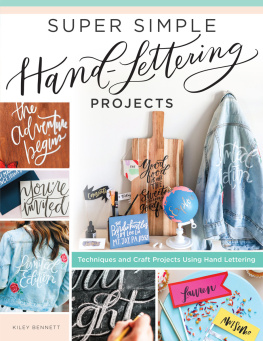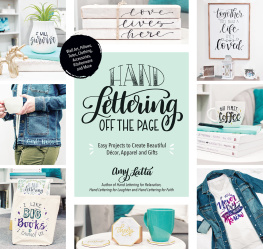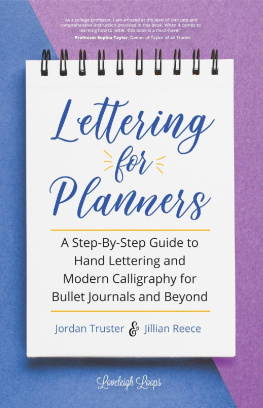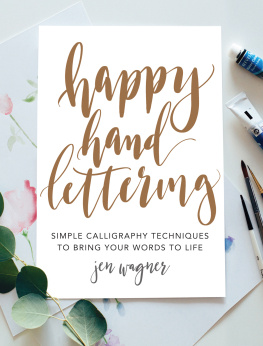Introduction
H and lettering is all around usfrom wedding stationery, shop signs, pub menus and house numbers to movie posters, music album covers, commercial packaging and urban clothing. Once you start looking for it, you'll notice it everywhere, and you'll see that it comes in a vast array of typographic styles.
Historically, hand lettering in the West began with the Latin alphabet in Rome around 600 BC. Originally, letters were carved into stone, and later they were painted onto walls and on the pages of religious texts. The skills needed to produce hand-written lettering developed and were refined over time, largely due to the practice of copying the Bible. By medieval times, lettering had become ornate and colourful, the first letter of each chapter of a book often being beautifully illuminated.
The invention of the printing press in the 15th century brought about a huge decline in hand-written manuscripts, however, the art did not die out completely. In more recent times, designers such as Eric Gillwho created the typeface still used today on the London Underground revived the art of hand lettering and safeguarded its popularity into the 20th and 21st centuries.
If you'd like to try creating your own unique and decorative hand lettering, this practical book is an excellent place to start. It is aimed at the absolute beginner and will guide you through all the fundamentals.
The book is divided into sections covering three distinct hand-lettering crafts: modern calligraphy, brush lettering and blackboard letter art. Each of these sections is presented by an expert artist, introducing you to their craft and providing a range of different typographic styles for you to discover and practise.
Whether you'd like to make a home-made birthday card, a decoration for your home, some eye-catching text for your website or business, or if you're even thinking about going into the professional signwriting business, the pages that follow will inspire you to get a nib, brush or paint pen and get started on a highly rewarding journey.
THE ARTIST IS NOT A DIFFERENT KIND OF PERSON, BUT EVERY PERSON IS A DIFFERENT KIND OF ARTIST
ERIC GILL




Contents
About the artist
I was first introduced to calligraphy by an art teacher whilst still at school and became instantly hooked. My trusty penholder and little tin of nibs accompanied me wherever I went and I volunteered my services to anyone who showed any interest. Then life got busy and I forgot about calligraphy for a while.
My passion was reignited about five years ago when my niece was getting married. She asked me if I could still do the fancy writing and I went in search of my penholders and little tin of nibs. I discovered that I could indeed still do the fancy writing and fell back in love with calligraphy. I then enrolled on various courses and workshops and dedicated my free time to improving my calligraphy skills.
Today I work as a professional calligrapher from my studio in Surrey in the UK, and have been lucky enough to work on a whole host of exciting projects. I have worked with many brides, helping to add that personal and unique touch to their wedding stationery as well as working with prestigious corporate clients such as Chanel, Aspinal of London, Waitrose, Christian Dior and Ferrero Rocher. My work has been featured in many blogs and publications associated with the wedding industry. As well as commission work, I enjoy passing on my calligraphy skills through my workshop programme throughout the UK and abroad.
Calligraphy has been defined as the art of beautiful penmanship. In our digital age, it is a pleasure and refreshing to receive something beautifully hand written. I believe that calligraphy undoubtedly adds something personal and unique to your event or occasion.
Judy Broad
www.judybroadcalligraphy.co.uk

About modern calligraphy
T here are many things I love about calligraphy: I love the rhythm of the pen, I love the sound of the nib gliding across the paper, I love watching the glossy ink drying on the page, and I love seeing peoples reactions when they receive something beautifully hand written. Now I cannot imagine life without calligraphy; I have found it rewarding and relaxing. When I embark on a calligraphy project, I become totally immersed in what I am doing and time just flies by.
The following pages will focus on a modern calligraphy style. While the foundation of modern calligraphy comes from a more traditional script, modern calligraphy is a more relaxed and style. Experiment, be creative and you will develop your own lettering style.
After being shown the basic materials and techniques, you will be guided through how to build a good foundation for letterforms and taught how to perfect them. Although this style is a modern variation, there is a definite nod to traditional pointed pen calligraphy because, as Pablo Picasso said, you should Learn the rules like a pro, so you can break them like an artist.
If you make time for practice, your efforts will be rewarded. Experiment and take inspiration from all around you and above all have fun on your very own calligraphy journey. In this digital age, it is refreshing to come away from our computer screens and mobile phones and be creative. You should remember to feel inspired by what you can create.
So give it a try and get ready to watch the magic happen!
LEARN THE RULES LIKE A PRO, SO YOU CAN BREAK THEM LIKE AN ARTIST
PABLO PICASSO

Supplies and materials
YOUR ESSENTIAL CALLIGRAPHY TOOLKIT
Before you can get started, you are going to need the right calligraphy tools.
One of the great things about calligraphy is that you dont actually need very much to get started. To begin with, you will need a pen holder, nib, ink and some paper.
We will take a look at each of these to enable you to have the confidence to make some informed choices and get started on your calligraphy journey. I would encourage you to purchase quality supplies. Fortunately, most calligraphy supplies are not too expensive, and you will find that using quality ones will really make a difference to your finished work.
If you are left-handed, please read the information on before buying a pen holder.

